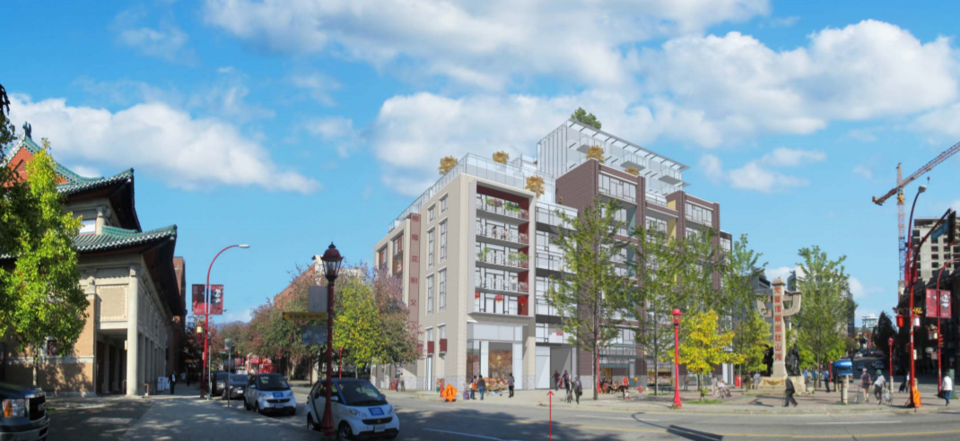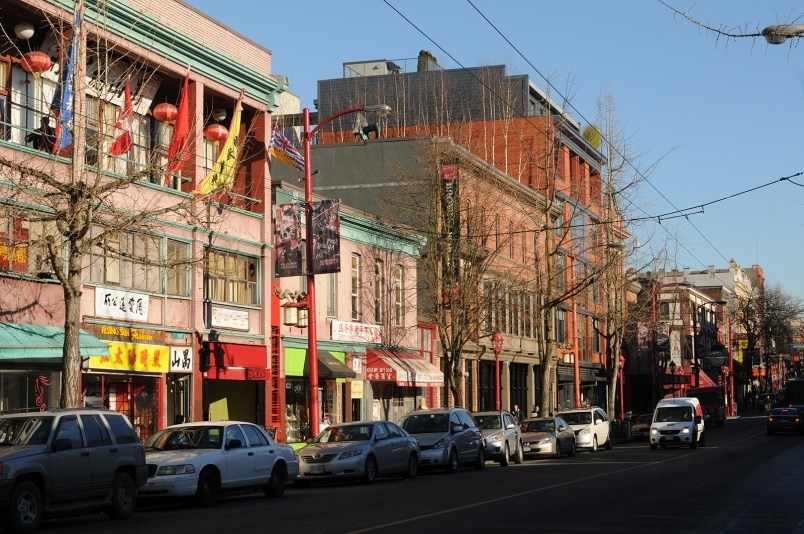Looking out the window from his pharmacy at Hastings and Main streets, Sammy Kam has a clear view of some of the challenges facing the community where he’s owned and operated Sam’s Pharmacy for the past 21 years.
“When I first started, it was quite peaceful,” says Kam. “Then, ever since the middle or late 1990s, we have illegal drugs in this area – heroin and cocaine – and the population has changed a lot because a lot of illegal drug users come to the area to get their fix.”
Kam sees the value in Chinatown continuing to be a cultural area, but also recognizes that Chinese merchandise and cuisine is now sold throughout Greater Vancouver. “There’s Chinatown everywhere,” says Kam. “So it’s important to have us keep up with the rest of Vancouver. If we don’t have a revitalization of Chinatown, I think Chinatown will die because of the drug problem.”
Kam would like to see more housing options, such as market condos, built in Chinatown to increase the number of residents and potential customers who frequent stores like his.
Last Tuesday, Vancouver City Council voted 8-3 against a proposal for a 12-storey mixed-use building at 105 Keefer St. – just around the corner from Kam’s pharmacy – that included commercial space on the ground floor, 106 market condos and 25 units of social housing targeted to seniors.

Turning down the proposal was a mistake, according to Kam, because of the potential for developments like this to provide more options for people interested in living and working in the area. His customers remain mostly non-native English speakers of Asian descent, many of whom are seniors, he says, but he wonders how long they will stick around without a new influx of residents.
“I want to see a more vibrant Chinatown,” he says over the phone. “I don’t want to see it stagnate in this area; I want to see it grow.”
City staff is consulting with the public and putting together an update to the Chinatown economic revitalization and development policies adopted in July 2012. According to the city’s website, that update will likely be presented to city council within the next few months and will include recommendations to temper land speculation and the pace of development. It will also present council with recommendations on capping building heights to 75 feet on Pender Street and 90 feet in Chinatown South; encouraging more mixed use building space on second floors where seniors’ and social housing isn’t provided; and, enhancing the character fit of properties.
Vancouver city councillor Kerry Jang hopes the update will help strike a balance between the competing interests in a highly split community.
The 105 Keefer St. proposal “really brought together all the angst and indecision,” of community groups and leaders “into one place,” says Jang, who decided to err on the side of caution by voting against the proposal. “What I’m hoping will come out of this is for people to say that we have to compromise.”
For Kam, who is also a director of the Vancouver Chinatown Merchants Association – a group comprised mostly of small business owners in Chinatown that supported the 105 Keefer development – Chinatown’s future depends on its ability to continue to attract businesses, visitors and residents. Kam doesn’t see an influx of new housing options pushing out low-income residents, and believes gentrification is “a natural process of how society grows.”
“The old way of Chinatown is outdated,” he states. “We have a mix of rich people and poor people living together… I don’t see that as detrimental.”



